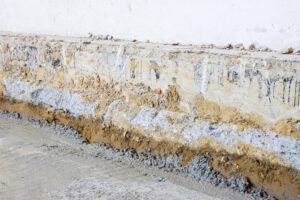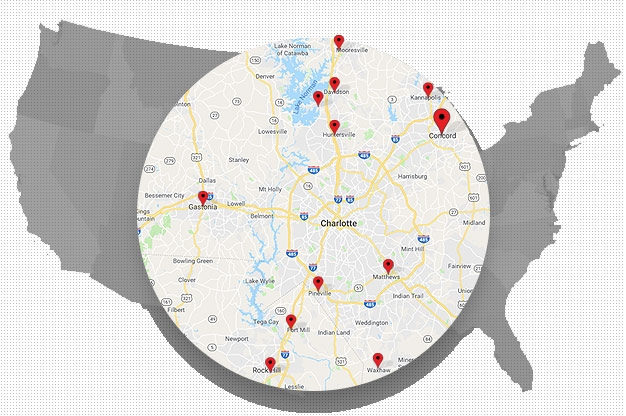What Causes Crawl Space Mold?

Do you know the state of your home’s crawl space? Do you know if it’s safe from dangerous mold growth?
A crawl space isn’t the most glamorous place in your home, but it is an important part of the overall structure. It’s also important to your family’s safety. If left to fester, mold growth can cause a myriad of different health issues and cause structural damage to your home’s foundation.
That’s why it’s vital to understand the causes of crawl space mold so that you can combat it before it becomes a problem. We’re here to help. Listed down below is everything you need to know.
The Necessary Elements for Mold Growth
Even though it’s located in a place that we don’t often think about, crawl space mold is a common occurrence that every homeowner should keep in mind. It’s a frequent problem because crawl spaces are the perfect habitats for mold to grow.
It’s a dark and enclosed area that often traps excess moisture inside. Organic materials such as soil and wood are aplenty, which allow the naturally-occurring mold spores in the air to latch on and thrive.
This makes crawl space maintenance far more important than you might realize. Without proper check-ups and repairs, mold could be running rampant underneath your home. Left unchecked, it could make its way through the foundation and inside your living space and even your lungs.
One of the best ways to stop mold from infecting your house is to stay informed about the ways it can start to grow.
Cracked Foundation
If you live in an older house, it may be time to take a look at your foundation. As a home ages, the foundation weakens and can even crack. This is bad for both the inside of your home as well as the crawl space underneath.
Cracks in the foundation allow moisture to get through to the less protected areas of your home’s structure and cause lasting damage. These cracks also make it easier for any mold growing in the crawl space to move up into your home’s basement. From there, those spores could seep into the rest of the building.
This problem is more common in foundations made from concrete, but it’s good to get regular inspections of your foundation to stay vigilant against mold.
Flooded Basement
Floods are notorious for being a nightmare for homeowners. They cause many problems such as structural damage, personal damage, and are a big cause for mold growth. The problem is that even if you clean out the basement, that same flooding may have infected the crawl space underneath.
If you’ve recently dealt with a flooded basement, the water and condensation make the environment ripe for mold. It’s important to always have a professional take a look at the crawl space during cleaning. They’ll find any potential problems and begin the mold removal process before it takes over the entire area.
Clogged Sump Pump
Sump pumps are important drains that keep your home safe from large collections of water. If these pipes clog up during a big storm, you’ll deal with a lot of flooding and water damage. This leads to a much higher risk of mold growth.
Don’t forget to keep up on maintenance with your sump pump system so that you never have to worry about it failing on you. This strengthens the overall longevity of your home and keeps mold at bay in your crawl space.
Uneven Yard
If your yard is uneven or if your home sits upon a hill, then you’re at risk for a moldy crawl space. It’s vital to ensure that your home has a graded yard so that you never have rainwater collecting in the wrong places after a big storm. Otherwise, that water will seep into the wood and crevices, and it’ll continue to sit there until mold begins to grow.
Whenever a rainstorm comes through your area, make sure to take a look for any large puddles around the base of your house. If you notice that the water isn’t draining away on its own, it’s time to think about finding ways to get that excess water away from your home.
Call up a professional company to help you learn about the different draining and prevention options available to you.
Damp Soil
Even if your yard is level and free from dips that allow water to sit, damp soil is still something you need to prevent. Soil moisture contained within your crawl space is a recipe for moldy disaster because that soil takes much longer to dry out in the dark and enclosed area.
The wooden structures that support your home soak up that moisture and begin to decay and rot, leading to further potential mold growth.
The best way to prevent this from happening is to ensure your home is encapsulated and that the encapsulation is always well-maintained.
Broken Encapsulation
The crawl space is an important feature of a home and it needs certain safeguards to keep it from causing harm. Otherwise, airflow from the space becomes dangerous and your structural integrity starts to be at risk. This is where encapsulation comes into play.
This is the process of putting up barriers that stop excess moisture from ever getting through to the area. Broken encapsulation means the dangerous moisture gets in and allows mold to start growing.
This is why you should have a professional company come in and repair any problems with your encapsulation. It’s the best defense your home has against mold-causing moisture in your crawl space.
Regular Maintenance Keeps Your Crawl Space Safe
The best way to stop mold problems from getting out of hand is to keep up with regular crawl space maintenance. By knowing more about the origins of mold growth, it’s easier to know when it’s time to call for crawl space repairs.
Once you notice a problem, make sure to call your local professionals right away!
To get your crawl space in perfect order, contact us today. We’ll help you with every step of the repair and maintenance process!
Recent Posts
- How Crawl Space Encapsulation Benefits the Environment – An Expert Guide
- 6 Ways Professionals Keep Your Crawl Space in Top Shape
- Structural Repair Solutions for Crawl Spaces, Basements, and Foundations
- Essential Crawl Space Repair Tips Every Homeowner Should Know
- The Importance of Radon Mitigation: Ensuring a Safe Living Environment for Homeowners
Categories
- Basement Mold
- Basement Waterproof Foundation
- Basement Waterproofing
- Crawl Space Dehumidifier
- Crawl Space Encapsulation Cost
- Crawl Space Repair
- Crawl Space Waterproofing
- Encapsulation
- Foundation Repair
- Foundation Waterproofing
- French Drains
- Leaky Basement
- Mold Remediation
- Mold Removal
- Radon
- Slab Jacking
- Sump Pump
- Uncategorized
- Vapor Barrier
- Water Leak
- Waterproofing
- White Mold
Archives
- June 2024
- May 2024
- March 2024
- January 2024
- June 2023
- May 2023
- April 2023
- March 2023
- February 2023
- January 2023
- December 2022
- November 2022
- October 2022
- September 2022
- August 2022
- July 2022
- June 2022
- May 2022
- March 2022
- February 2022
- January 2022
- December 2021
- November 2021
- October 2021
- September 2021
- August 2021
- July 2021
- June 2021
- May 2021
- April 2021
- March 2021
- February 2021
- January 2021
- December 2020
- November 2020
- October 2020
- September 2020
- August 2020
- July 2020
- June 2020
- May 2020
- April 2020
- March 2020
- February 2020
- January 2020
- December 2019
- November 2019
- October 2019
- September 2019
- August 2019
- July 2019
- June 2019
- May 2019

